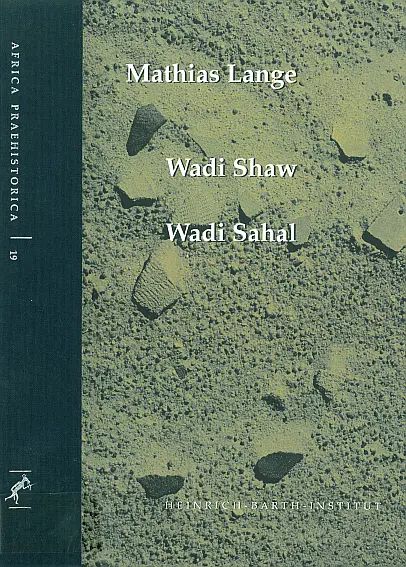- Autor/in:
- Author:
- Mathias Lange
- Mit Beiträgen von:
- With contributions by:
- Jürgen Richter und Werner Schuck
- Erscheinungsjahr:
- Publication year:
- 2006
- Reihe & Band:
- Series & Number:
- Africa Praehistorica 19
- ISBN:
- ISBN:
- 978-3-927688-30-8
- DOI:
- DOI:
- 10.18716/hbi/ap19
- Preis:
- Price:
- 58 € Aktuell: 5 €
- 58 € Discount price: 5 €
In diesem Beitrag wird archäologisches Fundmaterial beschrieben, das in einer kleinen Senke des Wadi Shaw stammt. Außer einigen Einzelfunden werden Artefakte aus zwei kleinen Grabungsflächen vorgelegt. Bei Stelle 82/ 82-1 andelt sich um ein weitgehend zu rekonstruierendes Gefäß. Nach den charakteristischen Oberflächenfarben (schwarzer Rand, rote, polierte Wand), der Oberflächenbehandlung (rippled ware) und der Verzierung (kleine Ritzungen auf der Randlippe) zu urteilen, liegt ein Gefäß vor, wie es für die A-Gruppe des Niltals typisch ist. Einfache Ritz- und Kerbverzierungen sind auch auf den wenigen Keramikscherben von 82 / 82-2 angebracht. Im Steinmaterial dieser Grabung dominieren mikrolithische Bohrer (mèches de fone^t) . Im Zusammenhang damit sind die Straußenei- und Quarzperlen von Interesse. Durch Zusammensetzungen war es möglich, die Zerlegung von Steinartefakten näher zu betrachten. Dieser Fundplatz ist durch 14C-Daten in das 5. Jahrtausend v.Chr. datiert. Die einzeln eingemessene Keramik von zwei anderen Stellen des Fundplatzes 82 / 82 zeigt ebenfalls Ritzverzierung an den Rändern und dürfte damit den Scherben von 82 / 82-2 zeitlich sehr nahestehen. Scherben von 82 / 82-5 sind mit einem Fischgrätmuster verziert. Über Vergleiche mit anderen Fundplätzen im Gilf Kebir (Ägypten), im Wadi Shaw, im Wadi Sahal und im Wadi Howar ist eine Datierung in das 4. Jahrtausend v.Chr. wahrscheinlich.
This book describes archaeological finds from a small depression in the Wadi Shaw. Apart from a few individual finds, artefacts from two small excavation areas are presented. Site 82/ 82-1 is a largely reconstructable vessel. Judging by the characteristic surface colours (black rim, red, polished wall), the surface treatment (rippled ware) and the decoration (small incisions on the rim lip), it is a vessel typical of the A-group of the Nile Valley. Simple incised and notched decoration is also present on the few pottery sherds from 82 / 82-2. Microlithic drills (mèches de fone^t) dominate the stone material from this excavation. The ostrich egg and quartz beads are of interest in this context. Compositions made it possible to take a closer look at the decomposition of stone artefacts. This site is dated to the 5th millennium BC by 14C data. The individually measured pottery from two other sites at 82 / 82 also shows incised decoration on the edges and is therefore probably very close in date to the sherds from 82 / 82-2. Sherds from 82 / 82-5 are decorated with a herringbone pattern. Comparisons with other sites in Gilf Kebir (Egypt), Wadi Shaw, Wadi Sahal and Wadi Howar suggest a probable date in the 4th millennium BC.

